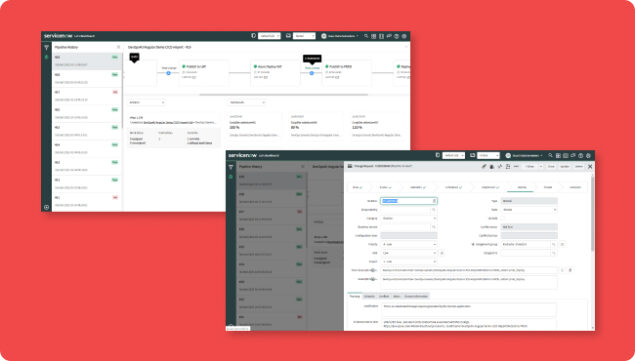How ServiceNow ITSM Pro Automates Change Management

The status, position, and perceived value of Change Management have significantly changed over the past 20 years. In a DevOps world, Change Management has become less important as a controller of changes but kept its relevance in the area of compliance.
The fast pace of DevOps has, however, made it necessary for Change Management to be much quicker than it was in the past—and that without becoming an administrative burden.
In this blog, we’ll discuss how you can transform Change Management from an obstacle to an asset by automating it with ServiceNow ITSM Pro. We’re really excited about the benefits this solution brings: through one of our customers with 15,000 changes a year, we were able to estimate that automating Change Management can save more than $600,000 a year. ROI is therefore only a matter of months!
Quickly jump to:
Change Management in the past and present
In a seemingly distant past, IT systems were behemoth-sized entities consisting of closely connected components. Effecting a system upgrade was a dangerous business, as changes could easily cause some of these interrelated elements to break. Change Management was called into being to evaluate the relationship between things so as to prevent something from breaking down.
How DevOps changed Change Management
The nature of DevOps has made this role largely irrelevant. With DevOps, the components of IT infrastructure are smaller and operate mostly independently from each other. It, therefore, has a much more flexible change process. Changes can be safely effected without anyone having to worry about what will happen elsewhere, which has significantly increased the number of changes; instead of them occurring a few times a year, they now happen multiple times a day.
So, has Change Management become a legacy practice?
The short answer is no, not really. But that’s the short answer: let’s flesh that out a bit and discover why Change Management remains important.

Why Change Management is still relevant in 2022
Change Management’s relevance has shifted from controller of IT upgrades to compliance watchdog, as many companies are legally obliged to register and justify their changes (esp. in the financial and energy sectors). Moreover, Change Management contributes to a company’s information provision and thereby, for example, helps bring down the mean time to resolve (MTTR) of incidents.
Why Change Management must evolve with the times
In the past, the process of Change Management used to take several weeks. In a breakneck DevOps world, however, Change Management must increase its speed. Changes take place around the clock now, so it’s paramount that Change Management does not become a burden by creating a load of administrative work.
The question is, then, how companies can leverage the value of Change Management without burdening their employees with a stream of red tape. Luckily, ServiceNow provides us with the perfect solution.
How ServiceNow ITSM Pro automates Change Management
ServiceNow ITSM Pro enables you to automate large swathes of the change process. ITSM Pro is a package consisting of (among many other things) ServiceNow’s ITSM and DevOps modules—however, we have noticed that many of our customers use ITSM – with its manual Change Management – and leave DevOps aside.
Change Management with SN ITSM vs DevOps
ITSMs change process requires developers to manually create a ticket, fill in information, attach evidence, and so on. This can naturally become quite a nuisance. DevOps automates these actions by tapping into the data contained in CI/CD tools. And it goes even further than that, automating large parts of the approval process and even alerting people when something is ready to be deployed.

The benefits of automated Change Management with ITSM Pro
We’re really excited about this aspect of ServiceNow ITSM Pro: Where large parts of the change process were already automated in DevOps, only the manual Change Management process remained. Now, even that can be automated, so you always meet change-related regulatory requirements without creating any administrative work.
Furthermore, we were able to estimate – through one of our customers with 15.000 changes a year – that automating Change Management can save you more than $600,000 a year. You will therefore see ROI in only a matter of months.

Join 1400+ ServiceNow professionals
Sign up to our monthly Flow@Work Exclusive newsletter to get free access to our expertise and lots of tips and tricks to make work flow on the Now® Platform.




